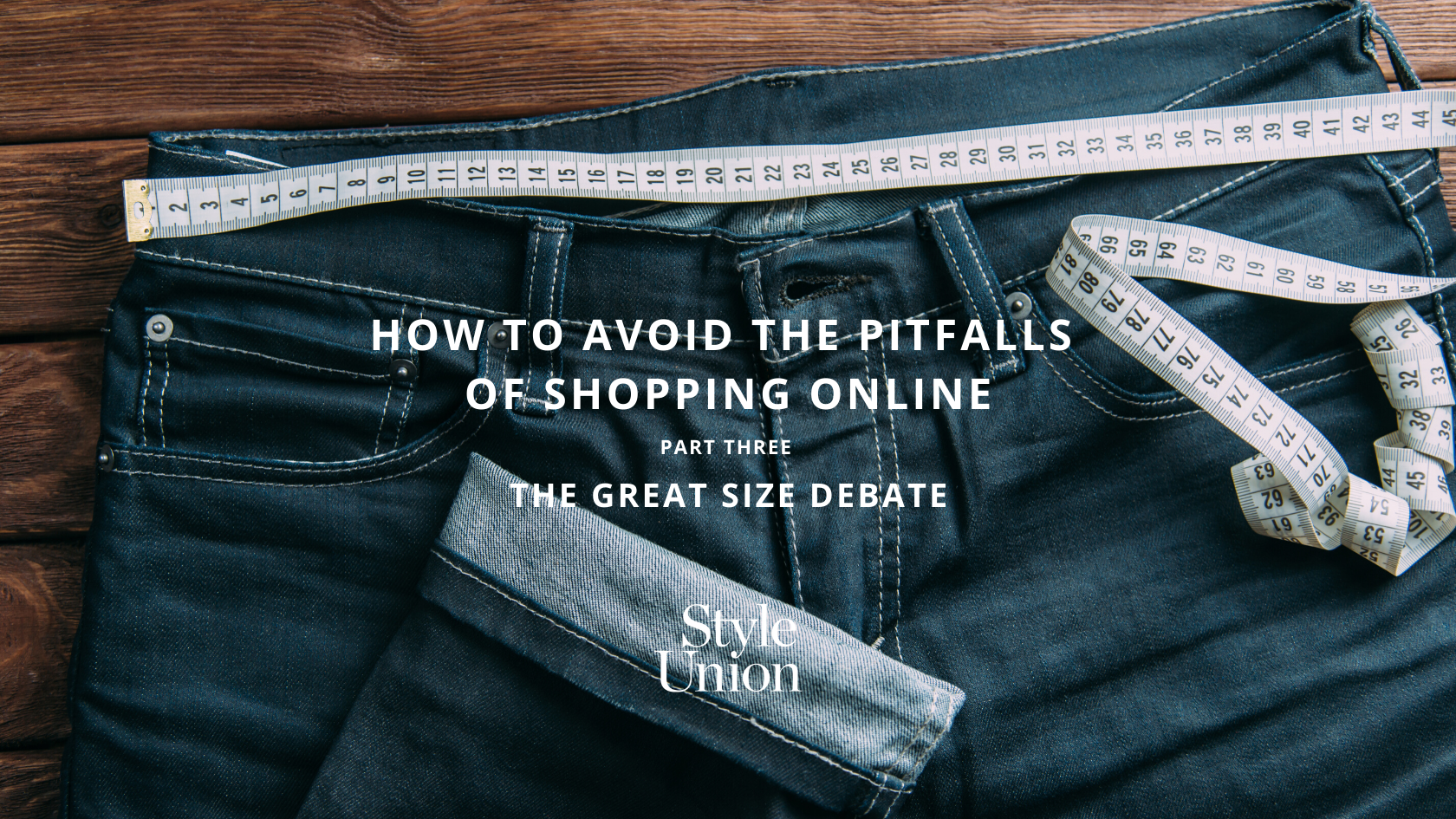How to avoid the pitfalls of shopping online - Part Three
Written by - Samantha La Porte
The Great Size Debate
Let's talk about size. If there is one thing above most that is really challenging about online shopping it is sizing. Knowing your size and what size you are in different brands is frustrating and downright annoying. UK sizing, US sizing, Euro sizing and more then there is the 0, 1, 2, 3 and S, M, L, XL plus everything in-between.
Even when stores were open (back in the good old days) and you were able to try things on, each brands’ sizing seemed to be different. Let's say you tried a pair of slim leg pants in a certain size from one brand, then you went to another brand to try on a similar pair of slim leg pants and to either your horror or elation you find out that you were a different size!
Don’t worry this is a very common problem. This problem stems from having no standard sizing and manufacturers along with designers using a very common practice to make you buy more (I’ll discuss later).
In Australia there has been no new standard sizing or size consistency since 1975. The last data that was provided to us was by the Australian Women's Weekly, a survey was taken where 11,455 female readers measured themselves and posted in their results. Voila! That was the basis of the standard size chart.
Fast forward 45 years and it's not surprising to learn that we still don’t have standardised sizing and that those measurements are no longer considered relevant, nor is it a secret that Australians today are bigger than they used to be and there is still no definitive data to show just what kind of shape we are really in.
According to CHOICE, in 2007 there was an Australian clothing size standard created for adult men and women however, it was withdrawn as it was considered no longer relevant.
Why is this important? It’s important because, you need to know and understand your measurements as well as those of the brands you are buying from, so you can make informed decisions about how an item is going to fit. There are inconsistencies in clothing sizes because designers and clothing manufacturers base their sizing on who they believe or want their ideal customer to be, their sales history and trend forecasts.
Now that you understand that there is a real inconsistency in sizing (which you probably already knew!) and that sizing is designed to suit the needs and demographic of their customers. Some if not most, mainstream mass produced retailers try to manipulate sizing to give customers that instant “feel good” moment, so they buy more.
This manipulation is commonly called “Vanity sizing”.
How do you navigate this world of online shopping and find out what brands are the right fit for you, especially when you can’t try things on?
A good place to start is looking at what you already have in your wardrobe, the labels you wear and what you like, this should help determine how you like garments to fit? When shopping online look at the style of the item and how it sits on the model or mannequin, take note of how they have described the fit and look at the size chart that they have supplied.
Sometimes this chart is not exactly correct and this can be down to a number of things such as
Garments being manufactured in different factories or countries
Imperial measurements instead of metric
Quality control issues
Having different designers within the same label
Different measurements in line with where those items are being sold
Ever gone overseas and found a brand that you are familiar with, fits differently even though it says its the same size that you would normally get? Clothing which is manufactured for one country’s demographic will sometimes not suit another. Brands accomodate to the market they are selling too.
The best way to understand fit is to have an independent eye look at each piece and the way it fits you. Enlisting the help of a stylist is a great place to start.
Book your complementary 30 minute virtual style consultation.
Measure Up!
When shopping either online or in store, the fit of the garment is the most crucial element of the purchase. If it doesn’t fit you, you are never going to wear it! Fit, trumps brand, trumps fabric, trumps colour, trumps cost, so when shopping online, knowing your measurements helps you to avoid the disappointment of a purchase not fitting you.
Measuring yourself correctly will help alleviate some of the confusion of figuring out if a garment will fit. If possible try and get someone else to measure you, this will help with the accuracy of your measurements and make sure that the correct areas are being measured.
Use a dressmaker’s tape to measure. This may seem obvious but believe me I have had clients measure themselves with a ruler and a tradesmen’s metal tape before. If you don’t have a dressmaker’s measuring tape handy then use a piece of ribbon. Mark it where the two ends meet, then measure the piece of ribbon from the starting point to the marking.
When measuring make sure that the tape is level, neither too tight nor too loose and try to measure yourself on bare skin, not over clothes.
What to measure?
Chest/Bust - take the measurement over the fullest part of your chest/bust making sure to skim over rather than pulling tight.
Waist - place the tape measure about halfway between the bottom of your lowest rib and the top of your hip bones, roughly in line with your belly button. It should be loose enough for you to be able to place a finger inside the tape.
Hip - With your feet together, measure around the fullest part of your hips. Making sure the tape is placed over the largest part of your buttocks and is level.
Other measurements that are worthwhile taking.
Inseam - This is the distance from the uppermost inner part of your thigh (crotch) to the bottom of your ankle. You can also do this measurement from an existing pair of pants that fit you perfectly (not saggy ones), measure the inseam of the pants, from the crotch to the hem.
Thigh - Measure the circumference of the fullest part of your thigh.
Upper arm - Measure the circumference of the top of your arm, two thirds up from your elbow.
Sleeve length - Place your hand at your waist. Then start at the middle of the back of your neck and measure to your shoulder, measure from your shoulder to just past your wrist bone where you would like your shirt cuff to sit. Having a slight bend the elbow when measuring allows for extra ease and movement.
Calf width - Measure the circumference at the widest part of your calf. This is great for when you are wanting to buy long boots.
Feet - Tape a piece of paper down to the floor. Sit on a chair and place your foot firmly on top of the piece of paper, outline of your foot all the way around making sure not to angle the pencil so it goes underneath your foot. Mark the longest length and widest width of your foot on the paper and measure using a ruler. Do this for both feet and always use the larger foot measurements as your size reference.



